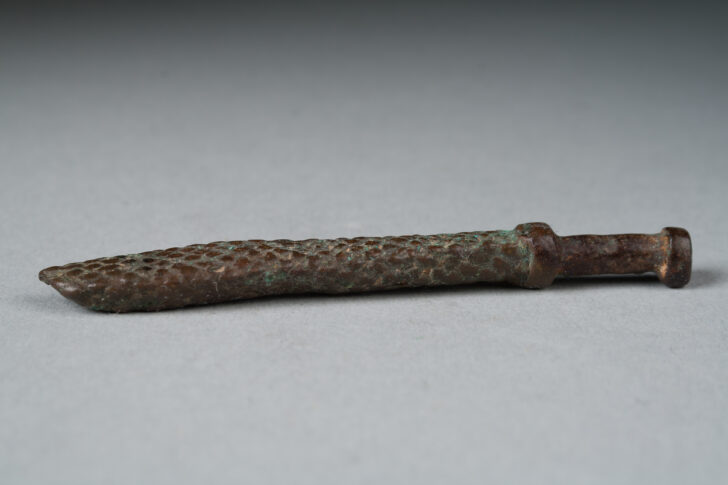Gold-weight
Akan

Description
Subject Matter:
Figurative gold-weight in the form of a sword, called afena in Twi, with a sheath. The stippled pattern on the sheath may represent ray-skin or leather (cf. Sheales, African Goldweights, 2014). During the 16th century, the use of swords was first recorded and they have played an important part in ritual and ceremonial contexts ever since. The curved, flat blade commonly found on Akan swords may have come from similar Islamic weapons that were carried along trans-Saharan trade routes (cf. Sheales, African Goldweights, 2014). In the 18th and 19th centuries, swords became increasingly elaborate to show the status and power of Akan officials. This allowed for internal and external communication in royal courts, as sword-bearers were sometimes sent to other courts as ambassadors (cf. McLeod, The Asante, 1981, pp. 88-90). These state or ceremonial swords are part of a king's regalia, but since the early 20th century, the role of swords has declined and today they remain in use as items of display (cf. McLeod, The Asante, 1981, p. 94).
Physical Description:
Gold-weight in the shape of a a cylindrical rod with a pointed tip and a handle made of a short, cylindrical rod between two circular discs. The majority of the cylindrical rod is covered in a pattern of small, raised dots.
Usage Rights:
If you are interested in using an image for a publication, please visit https://umma.umich.edu/request-image/ for more information and to fill out the online Image Rights and Reproductions Request Form.